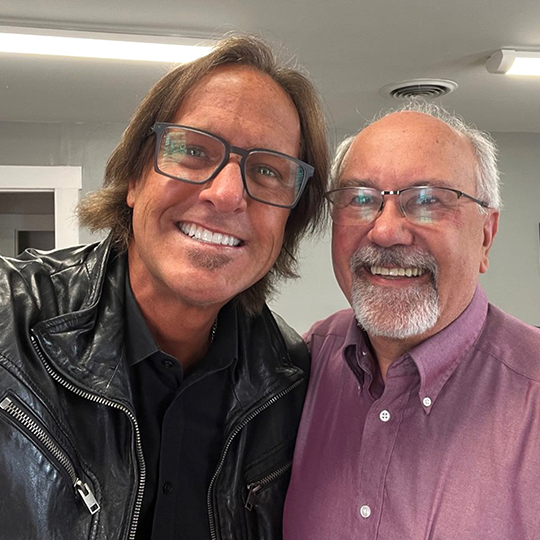Key Insights from the Giving Institute’s 2023 Summer Symposium
From Michael J. Tomlinson (MT), CEO and President, BDI
As organizations move forward into Q4 – a season when many nonprofits raise the lion’s share of their funding for the coming year – many leaders are asking, “What’s next?” and more importantly, “How do we get there?”
These questions have become increasingly difficult to answer today. Competition is fierce. Noise in the market is deafening. Donor behavior is changing. The ways in which we communicate and fundraise must adapt as a result. Continuing with “business as usual” puts at risk the longevity of an NPO’s life-changing services and programs, which so many in their community rely on. We must identify multiple ways forward to pivot, new opportunities to leverage, and courageously adapt to meet the evolving needs and expectations of those who will come alongside your critical work.
As a board member of the Giving Institute, I recently attended the Summer Symposium in Indianapolis, which offered many valuable insights on the future of fundraising from the nation’s top-level leaders in philanthropy. There I was privy to an exclusive interview with Clay Robbins, Chairman and CEO of the Lilly Endowment, one of the largest foundations and funders of grants to cause-driven nonprofits and ministries in America.
In addition to supporting the long-term study of philanthropy and generosity in America (via research core to the Giving USA annual report), the Lilly Endowment puts their money where their hearts are – giving tens of millions of dollars to dozens of nonprofits who are changing lives in significant and measurable ways. So their insight about the mindset and intentions of investors in cause work is gold!
Clay shared practical ways organizations can strengthen their case for support and grow their impact amidst changes in marketing and fundraising. According to Clay, many nonprofit teams are too close to their organization. They use “inside baseball” language when communicating about their work to donors, and lack outside expertise that could help translate their mission and outcomes effectively to those that might support them through donations, volunteerism or advocacy.
For you, my friend, likely a leader within a cause or faith-based NPO in America, this advice is worthy of review and serious consideration. Read on for a thought-provoking excerpt from this interview.
CLAY: The role and relationship between fundraising consultant agencies and NPOs is more important than ever. Most NPOs can be so heads down, they’re often not equipped to do the research and strategic thinking necessary to respond to a rapidly changing philanthropic environment.
The Lilly Endowment often makes “thinking money” grants to charities and NPOs – i.e., resources to fund consultants, agencies and research to make sure the project or cause is going the right direction and doing the right things and engaging the right audiences who care and should support them. The Lilly Endowment believes that NPOs who have agencies onboard serve them as wise management and help strengthen the charity’s infrastructure (greater than simply operating with in-house expertise and resources, in many/most cases).
QUESTION: What else should consultants do for clients (in addition to raising funds)?
CLAY: Consultants and agencies must help clients to rethink how their mission is presented, articulate their unique “how” and “why” in a market where today there are 100% – 300% MORE choices/options to give to than just 3 years ago (more NPOs and cause-driven movements that may look like them – and ask for money too). That’s a stark reality of competition for the same support dollar, and even more valuable, for the donor relationship.
Here are the hard facts of “playing field” of philanthropy as a donor-supported nonprofit organization today:
- It IS harder than ever to stand out.
- It IS harder than ever to be clear on your mission and outcomes.
- It IS harder than ever to make your unique case for support (in relation to other competing asks).
- It IS harder than ever to overcome the crisis of waning trust in organizations and in leaders.
- It IS harder than ever to make general communications and believable statements of “good work” to a more sophisticated lay audience.
- It IS harder than ever to say even more about your cause/need – faster.
- It IS harder than ever to present your messages with continuity across channels.
It IS more challenging than ever to put your messages everywhere they need to be, when they need to be there, to connect with donors – in their heart’s language and on their terms.
BUT the fight is more critical than ever.
That is why firms like BDI exist, to help provide nonprofit cause-driven organizations more value than ever – to serve their unique needs, to identify solutions to the unique challenges they face, to understand and strategically reach their unique audience of donors and prospective supporters.
A major challenge is that NPOs’ understanding of that increased need, and their understanding of the value of a relationship with an agency aligned with their cause, can lag well behind the needs of the charity and threaten success in both the short and long term. Often an NPO must be in utter crisis before being truly ready to accept this help and to fully listen, receive and submit to the full scope of experienced and trend-aware counsel.
Understand changes in corporate giving
What the Lilly Endowment sees – big picture – by virtue of sitting on so many large and small business boards of directors is there’s a big change in the spirit, style and future intentions of corporate giving. Many foundations, high-capacity donors and companies are no longer giving “good citizenship grants” and funds to simply support “community health” or other similar initiatives via community-oriented nonprofits for “boring infrastructure” and maintenance activities like they used to.
Instead, today’s corporations and foundations are looking for the “most shiny objects”: big projects and the expansion of support for proven winners. They want their giving to reflect well on them too, so they provide funds for public and social movements that align with their stated or aspirational business values (i.e., they are virtue signaling).
Foundations are pulling back their giving to support the necessary – yet less flashy – daily operations of NPOs or sustainer-type underwriting. As such, NPOs that count on those businesses giving gifts must go more aggressively after the public for support (new donor acquisition).
Invest in new donor acquisition
Those NPOs who are primarily dependent on a few supportive sources can be at perilous risk. All others would be very, very wise to invest courageously and with great strategic intent in this coming season in new donor acquisition. Even for nonprofits who are accustomed to new donor acquisition efforts supporting its own cost (delivering positive ROI in just 1-2 years), accept the data-supported trends that this isn’t the current reality in philanthropy in America today and adjust your expectations.
Invest in expanding your supporting network. Instead of seeking or demanding short term ROI, focus instead on the power of the lifetime value of these ever-precious relationships.
Change your perspective of what new relationship acquisition success looks like and make retention and upgrading of giving a greater priority on the back end – where you can tell your authentic story, show outcomes and build extended trust. After all, you (the NPO) are doing incredible and vital work and with more resources you can do more good.
Be transparent with your donors
The Lilly Endowment also encourages NPOs to make a much greater and institutional commitment to increasing transparency with donors. Tell them what you’re doing now, what is changing now, what it means now, how the work you do matters to you and those you serve and donors/volunteers too.
Most CRITICALLY: Tell donors what will surely happen if we, together, do not accomplish our goals because of a shortfall of money and the ability to expand scope of reach and impact. Paint the clear picture of the world in your nonprofit’s absence.
Don’t assume donors know and understand the layers of need simply by showing someone who is “down and out.” As when building major donor appeals or capital campaigns, even individual donor messaging should include elements of a “case for support,” i.e., the story that preemptively answers the questions that donors at all levels are considering. (The Lilly Endowment’s massive annual research supports this truism.)
We must press forward with a narrative that answers donors’ most important questions about those in need:
- What happened to them and those like them that brought them to this place of vulnerability?
- Why is your specific charity called to respond to the hurting and their needs (versus others)?
- Why, as donors with aligned values and giving hearts, can we not and should we not believe that others will step up and help fix the problems here and now?
Communicators at NPOs or supporting agencies (like BDI) lean into the big challenge of answering these questions…
- We (charity) WALK THE WALK OF OUR VALUES.
- We (charity) ARE DOING THE WORK THAT MUST BE DONE.
- We (charity) BELIEVE – WE BELIEVE IT CHANGES LIVES.
- We (charity) WILL NOT QUIT.
- We (charity) CAN AND SHOULD BE TRUSTED.
- We (charity) CAN SHOW YOU I-ROI (Impact ROI) for your gift – a direct correlation of your gift to vital outcomes/impact.
Emphasize your impact over operational efficiency
As cause- or faith-driven organizations, we can’t have the mindset of “competing on cost” with others who’re asking the public (and foundations) for money. Internally, organizations must fight against the presumption that their supporting public is primarily focused on giving to NPOs “doing the most (good) with the least (resources).” In an ever-increasing “cost of goods” and inflationary period, this is a losing proposition. It simply costs more to serve well – and serve well we must all. Most donors, both institutional and individual, understand this truth, especially today.
Through our work together and BDI’s counsel, understand that fundraising is NOT largely about the $1.95 meal versus a $3.35 meal… What we need to emphasize today is a hurting person’s full belly, their clearer mind, their dignity, their belief in a future, and make a direct connection between the problems an NPO addresses (thanks to a donor’s support), and the genesis and stoking of HOPE.
While donors may not be able to relate to the specific condition(s) being experienced by the constituents of the NPO (hunger, addiction, poverty, unemployment, pain, mental health, fear, loneliness…), they all have experienced the pain and disconnection of the lack or leaking of HOPE. They can have a personal, empathetic connection to that.
So… Show the direct connection between meeting physical and spiritual needs and the enhancement of transformational HOPE. Ultimately – this is what YOU do!
Invest in relationships for greater impact
As you navigate shifting currents and boldly drive your organization forward into 2024 and beyond, please invest in strengthening your relationships with outside helpers. Seek out a foundation, a consultant, an expert agency that are eager to partner with your mission and can help you amplify and clearly communicate your message to donors aligned with your cause.
Let us continue to work together, unwavering in our commitment to make a brighter future possible for your organization, and most importantly, for those you serve. We love investing our gifts and resources together, to be challenged together and to make our case for support in the most clear, authentic, simple and truthful ways possible.
It is a profound privilege for us at BDI to work together with you, directly as a partner or indirectly as the larger body in philanthropy who is charging the hill to make exponential human impact – all that really matters.





